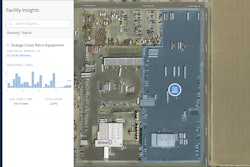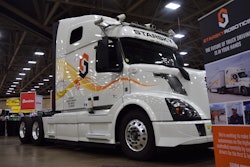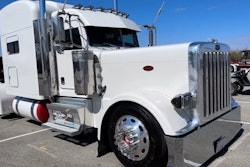
The KeepTruckin company, a leading provider of electronic logging devices to Overdrive‘s audience of independent owner-operators and small fleets, announced the public launch of its Facility Insights tool Tuesday, likewise updating pricing for its ELD with three tiers of subscription. As reported previously, KeepTruckin’s Facility Insights tool leverages data from KeepTruckin’s network of more 250,000 trucks and 55,000 carriers among ELD subscribers or logging-app users to build a complete picture of facility dwell times.
Contrary to prior reports, which noted the tool would remain free to KeepTruckin customers who do not opt out of allowing their data to be used to develop the tool, Facility Insights is not available to all of KeepTruckin ELD users, whose aggregated and anonymized data underpin its insights and were used in developing the tool. Rather, the new “Pro” tier (formerly “Plus”) subscribers, the company says, will have access to the tool, though the company says it plans to make the tool available to other KT users in the future.
KeepTruckin recently restructured its pricing model with the Starter ($20 monthly), Pro ($35) and Enterprise (dependent on the fleet) tiers for subscription to its ELD services.

The company also transitioned from a hardware-lease model for its ELD units to an ownership model — new subscribers, rather than lease equipment from the company, will now purchase KeepTruckin ELD units for $150, noted company rep Kim Maynard.
The company hopes carriers will put Facility Insights to use toward these potential outcomes:
- Detention-time reduction, revenue boost: The company’s research shows that 75% of drivers are detained for at least two hours once a week. In periods of high volume, reducing detention time can result in enhanced revenue.
- Maximized use of available hours: Fleet managers can search for a warehouse address to view the average truck dwell times by time of arrival. With visibility into busy periods to avoid, they can optimize pickup and dropoff times to minimize delays and detention.
- Improved safety culture: The company in past documented something of a hurry-up effect inherent in driving behavior for many after a long delay at a dock. Drivers who are detained for at least 2 hours, KT says, drive an average of 5 mph faster once leaving the facility; a 15-minute increase in dwell time raises the likelihood a driver will be involved in a crash by 6.2%.
- Stronger shipper relationships: Greater transparency into arrival and dwell times decreases the number of late deliveries that can strain relationships with shippers and consignees, the company says. Fleets can help shippers understand how to shape experiences at the facility to build mutually beneficial relationships.
“Detention time is an unnecessary expense that costs the trucking industry over $3 billion a year,” said KT Vice President of Product Jai Ranganathan. “Unpredictable delays result in a chain reaction of late pick-ups and drop-offs that can throw off a dispatch schedule for days.”








